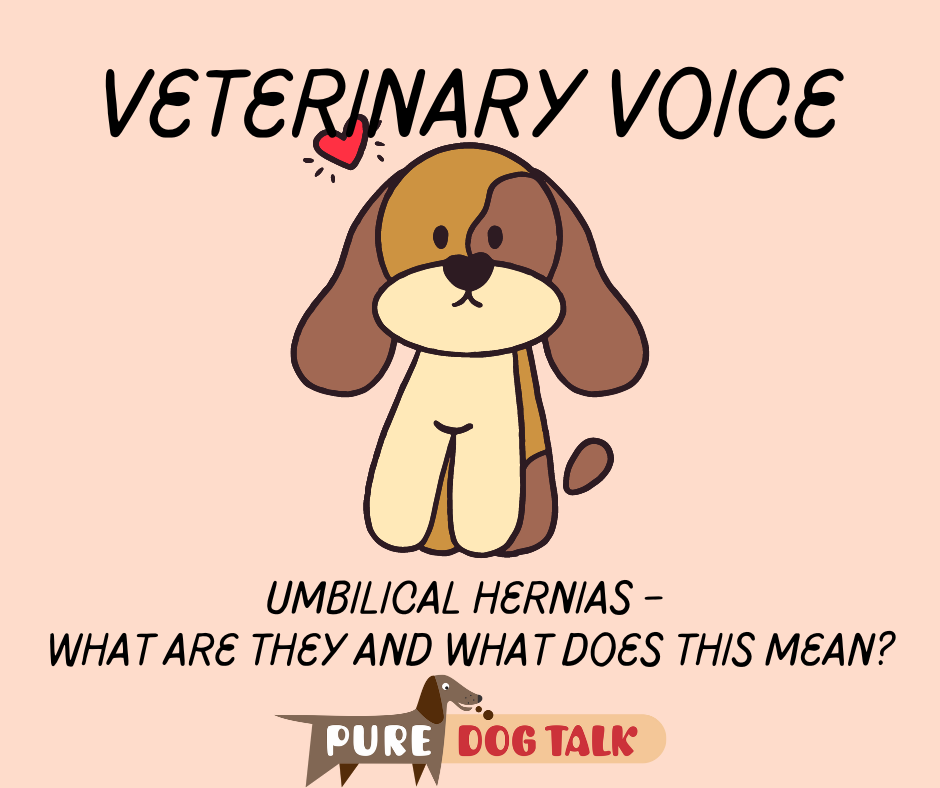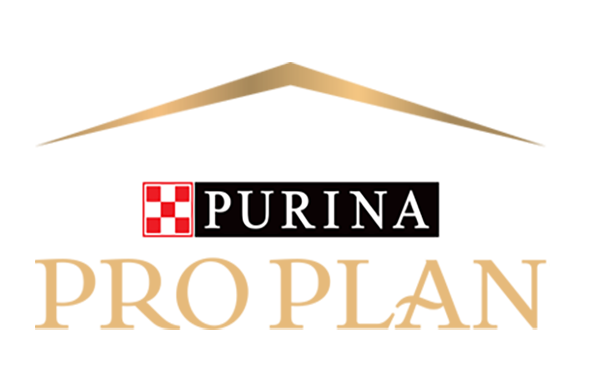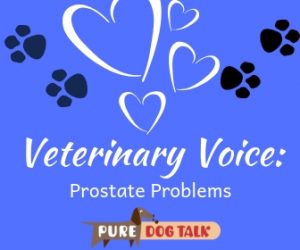540 — Dr. Marty Greer’s Deep Dive on Umbilical Hernias

Umbilical Hernias – What are they and what does this mean?
Dr. Marty Greer, DVM shares a deep dive into the question of hernias, different types, and whether dogs with hernias should be included in breeding programs.
By Dr. Marty Greer, DVM
An umbilical hernia is a weakness or opening in the muscle wall of the abdomen where the umbilical blood vessels pass prior to birth. Frequently abdominal fat is in the hernia but the skin is intact across the hernia, so there are no exposed abdominal organs. The fat may be omentum or part of the falciform ligament.
There are several disorders seen in mammals that are similar to an umbilical hernia and may add confusion to the discussion.
Other types of hernias
Gastroschisis is when a puppy’s intestines protrude outside abdomen through an opening off to the right side of the belly button/umbilicus with a bridge of skin between the umbilicus and defect. The intestines and abdominal contents are not covered by a protective membrane. Because the intestines are not covered by a sac, they can be damaged by exposure to amniotic fluid in utero, which causes inflammation and irritation of the intestine. This can result in complications such as problems with movements of the intestines, scar tissue, and intestinal obstruction. It is also difficult to keep the intestines and other organs sterile, moist, contained, and undamaged during birth and handling shortly after birth.
Omphalocele occurs when the newborn pup’s intestines, liver or other organs protrude outside the abdomen though the umbilicus. Embryologically, as the puppy develops during the first trimmest of pregnancy, the intestines get longer and push out from the belly into the umbilical cord. The intestines normally go back into the belly. If this does not happen, an omphalocele occurs. The omphalocele can be small, with only some of the intestines outside of the belly, or it can be large, with many organs outside of the belly.
In this situation, the organs are covered with a thin, transparent sac of peritoneal tissue. There are often other associated birth defects including heart and kidney defects. Additionally, the abdominal cavity may not be large enough to accommodate the organs when replacing them surgically. In humans, it is associated with heart and neural tube defects as well as other genetic syndromes. An omphalocele is worse than gastroschisis – it has more associated anomalies and a higher rate of mortality than gastroschisis.
When a puppy is born with intestines exposed, whether an omphalocele or gastroschisis, immediate surgery is necessary. If the pup is born at the veterinary hospital, there is a better chance of successful interventional surgery. However, despite the best efforts of the veterinary team, some pups cannot or should not be saved. Surgery includes protecting the organs while transporting and preparing for surgery, keeping more intestines from pushing out of the abdominal cavity while handling, keeping the intestines sterile, and protected from damage, anesthesia of the newborn pup, enlarging the abdominal wall defect to reposition organs into the abdominal cavity, appropriate suture techniques, post op antibiotics, and post op pain medications.
For most pups born at home, this cannot be accomplished. For some pups born by c-section, this can be accomplished with quick thinking veterinary team members, a skilled surgeon, owners willing to put forth the money and effort, no additional genetic disorders, and a lot of luck.
Other hernias seen in humans and animals include inguinal hernias (in the groin region), diaphragmatic hernias, peritoneal-pericardia diaphragmatic hernias (PPHD) and traumatic hernias anywhere on the body cavity. Inguinal hernias are second to umbilical hernias in frequency. An open thoracic wall rarely occurs. In this case, the pup can rarely be saved as there is usually inadequate chest wall (ribs and skin) to close. Additionally, surgical intervention is too slow to keep the pup breathing during intervention.
Other midline defects also include cleft palate, cleft lip, open thoracic wall, open fontanelle and spina bifida.
Back to umbilical hernias
It is generally considered that umbilical hernias have a genetic basis. Despite the wish that umbilical hernias are caused by trauma to the umbilical stump at birth, this is rarely the case. Veterinary staff is very careful to tie and handle umbilical cords carefully. Even when a bitch is aggressive while chewing the cords, they do not result in hernias.
There are some veterinary experts who recommend avoiding breeding all dogs umbilical hernias, stating that these dogs when bred will have progressive severity, resulting in gastroschisis and omphalocele. Other veterinary experts do not believe this is the case.
Should you allow a dog with an umbilical hernia to be used in a breeding program? That depends on several factors.
There is no perfect dog. In my opinion, we need to rate genetic and congenital disorders based on severity. I rate disorders on a scale of one through three. To me, level one is a minor disorder that is easy to live with or easy to correct. This includes umbilical hernias, distichia (extra eyelashes), entropion (rolled in eyelids), and retained testicle(s).
Level two are disorders requiring long-term management but that are not life-threatening or life-altering. This includes hypothyroidism, anxiety, and allergies. These require life-long medication and management but other than the associated costs, do not seriously impact the dog’s quality or quantity of life.
Level three includes life-threatening, life-altering, or life-shortening disorders. This includes bad temperament, seizures, orthopedic disorders (hip dysplasia, elbow dysplasia, cruciate disease) and at some point cancers (when we can DNA test for these). These cancers will include lymphosarcoma, malignant histiocytosis, hemangiosarcoma, and osteosarcoma. Many people make excuses for bad temperament, but when a dog is a threat to humans, I am of the opinion that these dogs should never be in a breeding program.
The biggest problem with the level one disorders are that veterinarians and breeders can detect these at an early age. As a result, these pups are booted out of a breeding program before other disorders can be detected and eliminated. In many cases, by the time level two and three disorders are found in a dog or line of dogs, it is too late – they have already produced pups. Once we have better DNA tests, we can do a better job of eliminating some of these disorders.
Another concern many veterinarians have is the risk of abdominal organ strangulation and/or entrapment if the umbilical hernia is left unmanaged surgically. According to the unpublished literature, this condition is rare and is easily managed if it becomes a concern. The AKC and AVMA allow and encourage the surgical correction of umbilical hernias should this be medically indicated.
If a pup or pups are produced that do have umbilical hernias, the recommendation is to correct them surgically if they don’t close on their own (many do) and at the time of spaying or neutering if they don’t close.
In summary, umbilical hernias are genetic disorders in most breeds and most cases. However, they can easily be corrected surgically if indicated. It is exceptionally rare to need to use mesh or other complex surgical techniques to close the vast majority of umbilical hernias. This single genetic condition should not be a reason to eliminate mildly affected dogs from a breeding program if the dog has other qualities that merit the inclusion in a program.
KNOWLEDGE IS POWER — FRANCIS BACON
When you become a patron of Pure Dog Talk you’ll tap into an exclusive community of experts to help you and your dog be blue-ribbon best at whatever you do with your purebred dog! Your support helps keep the MP3's rolling at Pure Dog Talk!
As a supporter, you’ll immediately gain access to the weekly Pure Pep Talk SMS, Pure Pep Talk private Facebook group, and priority emails. Patrons can choose to level up to the After Dark Zoom and a Patrons Digital Badge for their website— even a private counseling session with Laura on any topic.

DON'T MISS AN EPISODE!!












